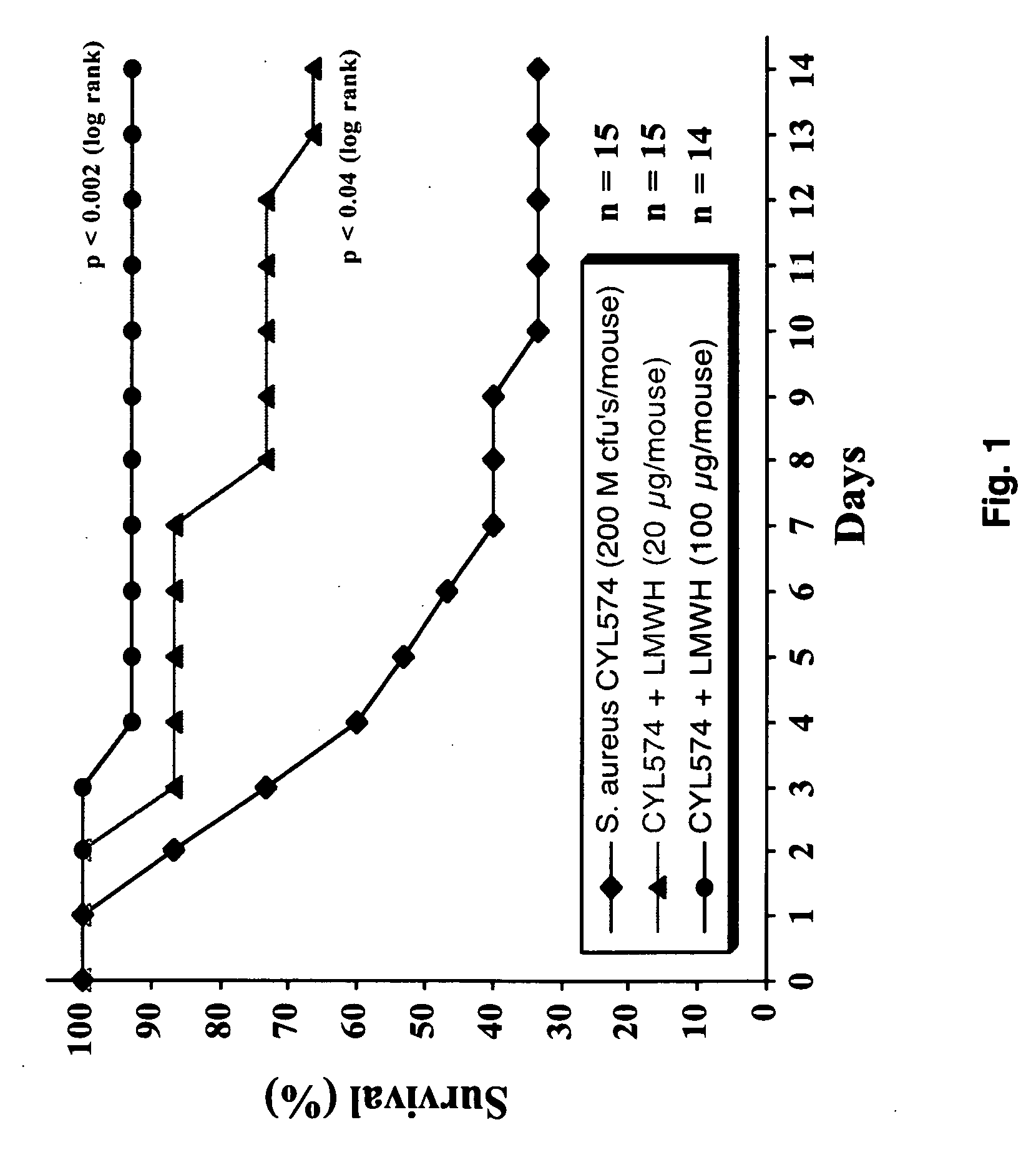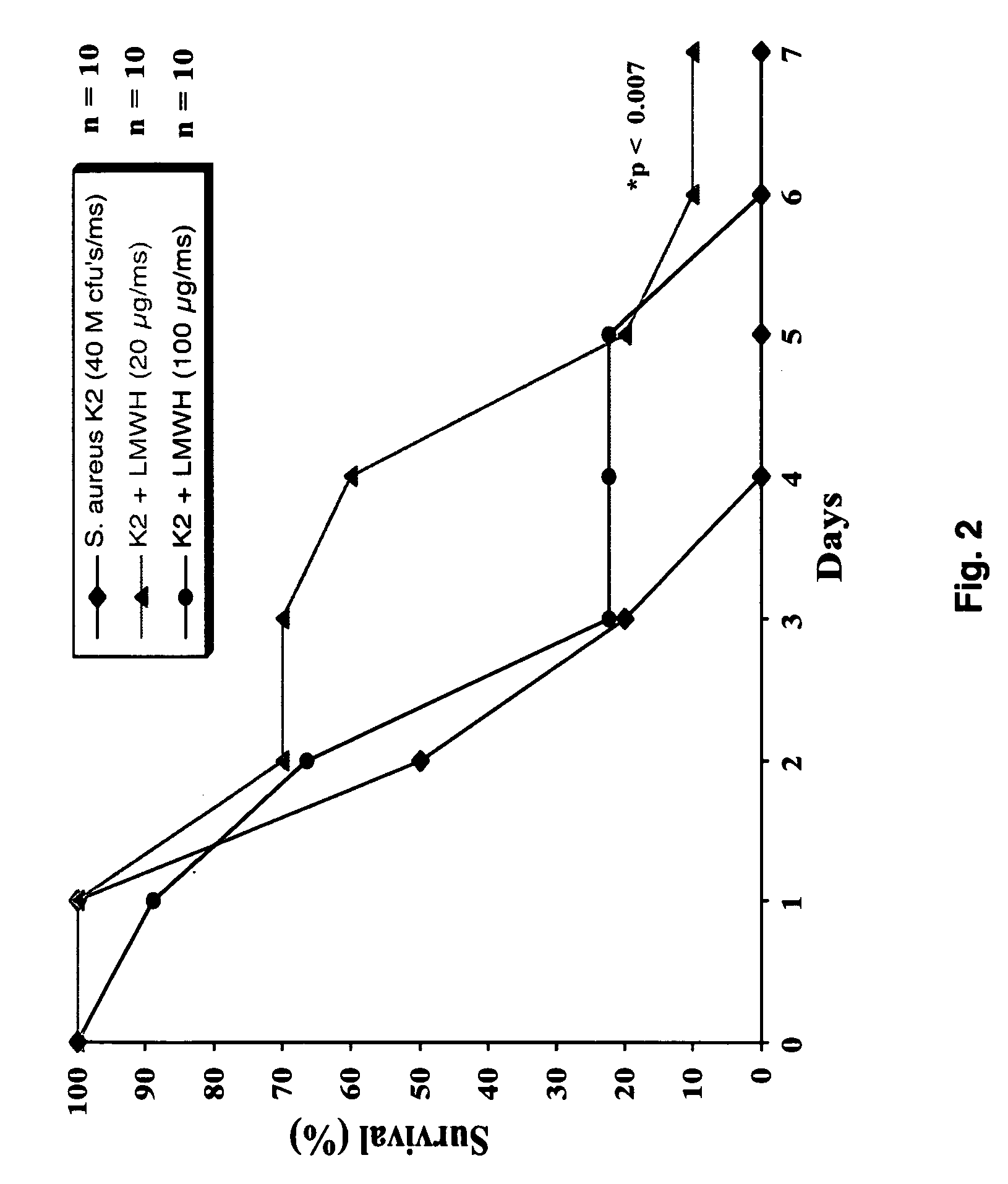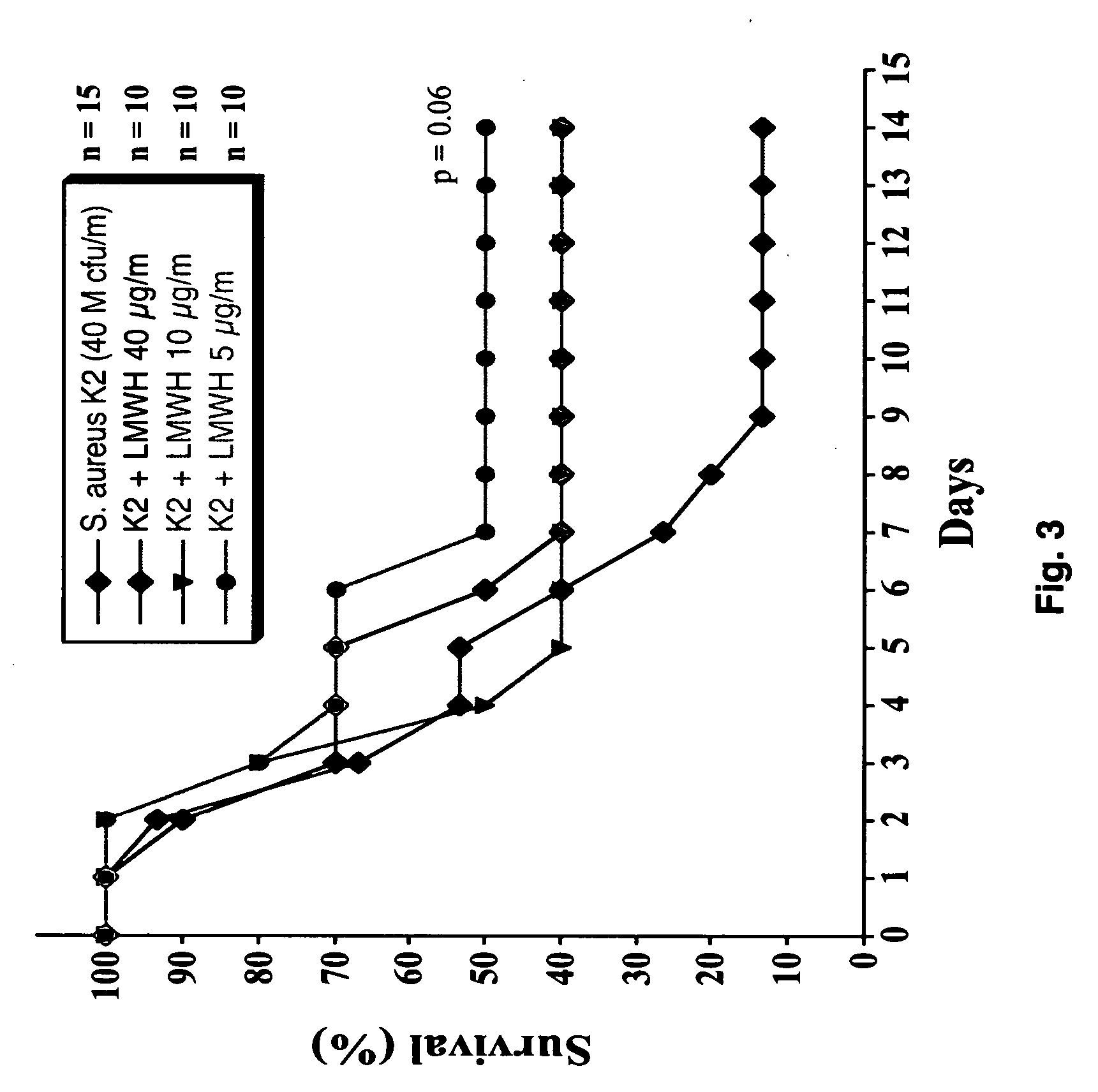Use of glycosoaminoglycans for the prevention and treatment of sepsis
- Summary
- Abstract
- Description
- Claims
- Application Information
AI Technical Summary
Benefits of technology
Problems solved by technology
Method used
Image
Examples
example 1
Use of Low Molecular Weight Heparin in the Prevention and Treatment of Sepsis
[0052] Experiments evaluating the effects of low molecular weight heparin in preventing mortality and / or prolonging survival were conducted in an animal model of S. aureus-induced septic death. FIG. 1 shows the effects of low molecular weight heparin after inception of sepsis. Mice that were treated with a prophylaxis dose (1 mg / kg) of low molecular weight heparin exhibited a survival rate of 66.7% 14 days after infection as compared to 33.3% in the control group treated with PBS. Mice treated with a high dose (5 mg / kg) of low molecular weight heparin exhibited a survival rate of 92.8% after infection (p=0.0017 versus control).
[0053]FIG. 2 shows the effects of low molecular weight heparin after infection with a supra-lethal dose of the highly pathogenic S. aureus clinical isolate K2. Mice treated with a prophylaxis dose (1 mg / kg) of low molecular weight heparin had a survival rate of 70% versus 20% in th...
example 2
Dose Response Study with LMWH
[0055] A dose response study with low molecular weight heparin was carried out in an animal model of S. aureus-induced sepsis. Infected mice were injected subcutaneously with increasing doses of low molecular weight heparin ranging from 540 μg at 2 hours and subsequently every twenty four hours (FIG. 3).
[0056] It is clear from FIG. 3 that doses approximately 1 mg of low molecular weight heparin / kg body weight per mouse per day. This result also suggests that low molecular weight heparin has a narrow therapeutic window.
example 3
Effects of Chondroitin Sulfate A in S.aureus-induced Sepsis
[0057] Chondroitin sulfate A (CSA), a glycosaminoglycan, was tested to evaluate its therapeutic effect (FIG. 4) in an animal model of S. aureus-induced sepsis. Infected mice were treated to chondroitin sulfate A in a dose range of 50-2500 mg of chondroitin sulfate A at 2 hours and subsequently every twenty four hours.
[0058]FIG. 4 clearly shows that chondroitin sulfate A, when injected at a high dose of greater than 10 mg / kg body weight or greater than 200 μg per mouse have prolonged survival as compared to infected mice treated with PBS. It was further seen that very high doses (>100 mg / kg body weight) of chondroitin sulfate A confer augmented survival during the first days after the onset of sepsis. However, continued daily high doses of chondroitin sulfate A appear to be detrimental in infected mice.
PUM
| Property | Measurement | Unit |
|---|---|---|
| Mass | aaaaa | aaaaa |
| Mass | aaaaa | aaaaa |
| Mass | aaaaa | aaaaa |
Abstract
Description
Claims
Application Information
 Login to View More
Login to View More - R&D
- Intellectual Property
- Life Sciences
- Materials
- Tech Scout
- Unparalleled Data Quality
- Higher Quality Content
- 60% Fewer Hallucinations
Browse by: Latest US Patents, China's latest patents, Technical Efficacy Thesaurus, Application Domain, Technology Topic, Popular Technical Reports.
© 2025 PatSnap. All rights reserved.Legal|Privacy policy|Modern Slavery Act Transparency Statement|Sitemap|About US| Contact US: help@patsnap.com



